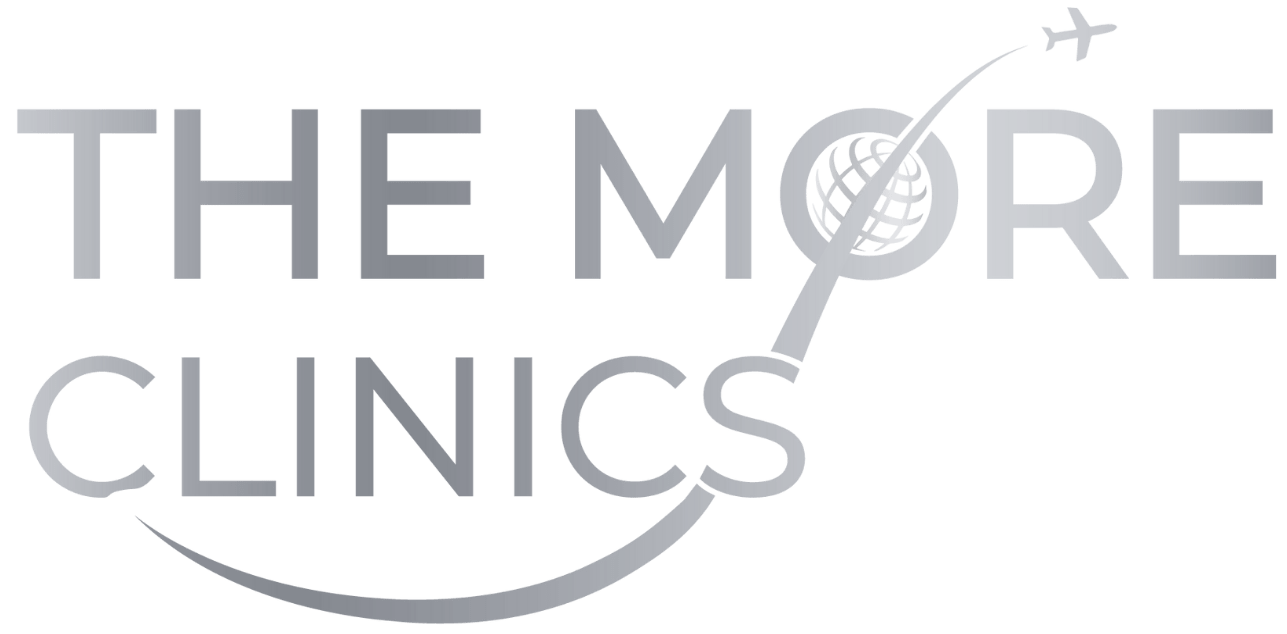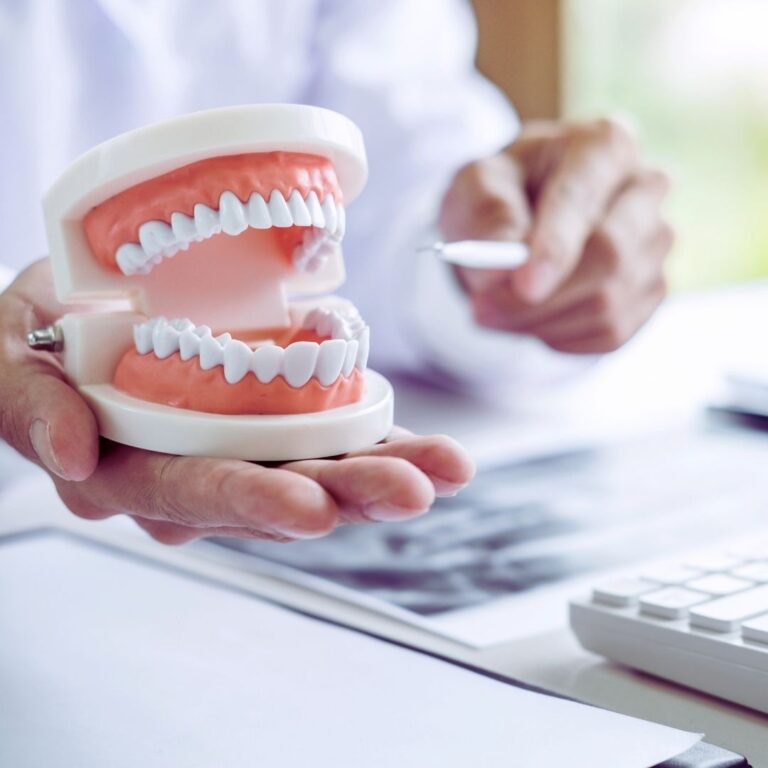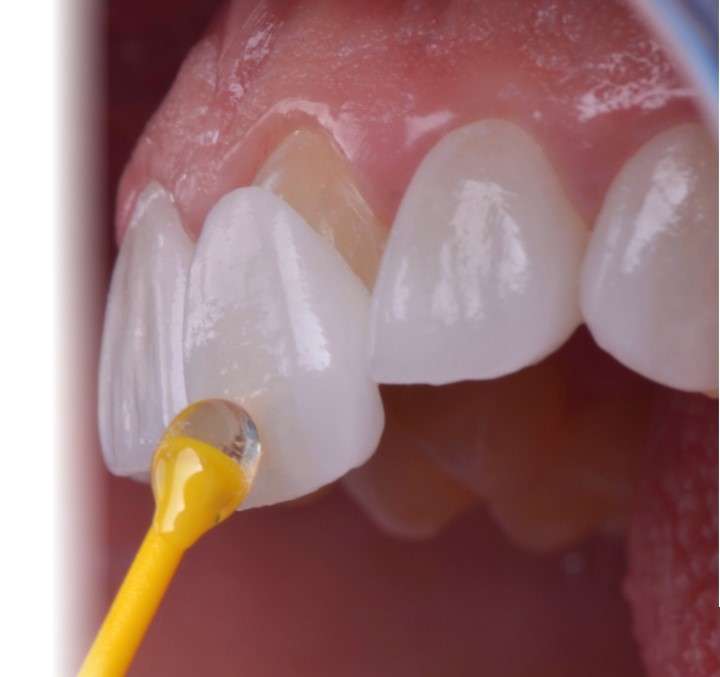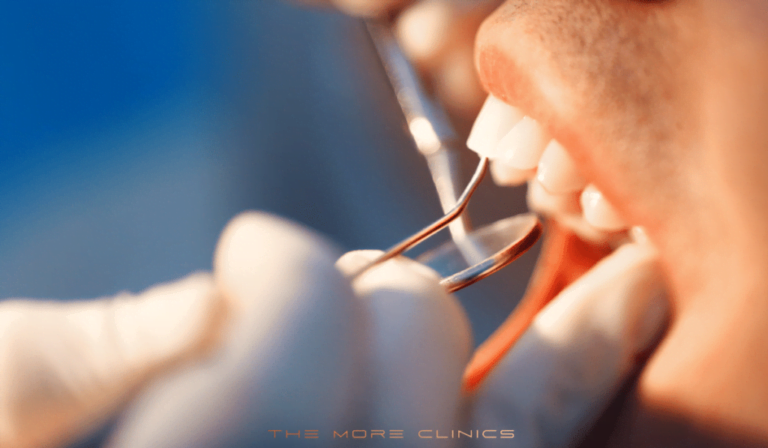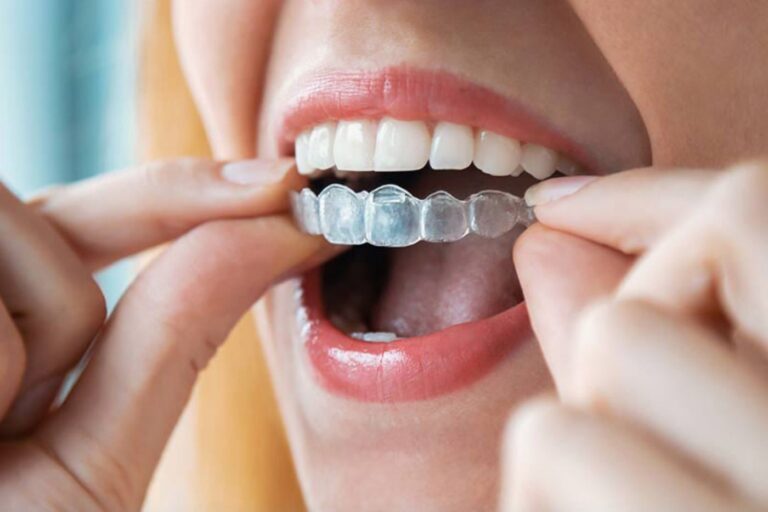Zahnabszess: Alles, was Sie wissen müssen
A dental abscess or tooth abscess is an oral health condition that requires prompt attention. As a pus-filled swelling in the tooth or gum area, it can cause persistent pain and lead to further complications if left untreated.
The primary dental abscess cause is bacterial infection. When bacteria invade the dental pulp — the innermost part of the tooth that contains blood vessels, nerves, and connective tissue — an abscess can form. This usually happens due to severe tooth decay, gum disease, or a cracked tooth. These conditions allow bacteria to penetrate the pulp chamber, leading to infection, inflammation, and the formation of a pocket of pus, which is the abscess.

Types of Dental Abscess:
There are three main types of dental abscess: periapical, periodontal, and gingival. Each type is based on the location of the infection within the tooth or surrounding tissues.
Periapical Abscess:
This type of dental abscess occurs at the tip of the tooth’s root due to a bacterial infection in the dental pulp. It is commonly caused by untreated tooth decay, trauma to the tooth, or previous dental work that has not been completed properly.
Periodontal Abscess:
A periodontal abscess affects the tissues surrounding the tooth, such as the gums and supporting bone. It typically occurs as a result of advanced gum disease, which causes the gums to pull away from the tooth and create a space for bacteria to accumulate.
Gingival Abscess:
A gingival abscess is a localized infection in the gum tissue that is not directly related to the tooth or its root. It often occurs due to injury, such as biting down hard on food or accidentally brushing too hard, which causes damage to the gum tissue and allows bacteria to enter.
Tooth Abscess Stages:
Dental abscesses can progress through several stages, each with its own set of symptoms and risks. Understanding these stages can help you identify the condition early on and seek prompt treatment.
Initial Stage:
The initial stage of a dental abscess is characterized by mild discomfort or sensitivity in the affected tooth. This could be due to the onset of infection or irritation in the dental pulp.
Acute Stage:
As the infection spreads, the abscess becomes more prominent and may cause severe pain and swelling. At this stage, you may also experience other symptoms such as fever, swollen lymph nodes, difficulty opening your mouth, and bad breath.
Chronic Stage:
If left untreated, a dental abscess can reach the chronic stage, where the infection may have spread to other parts of the mouth or body. This can lead to serious complications, such as tooth loss, bone damage, and even sepsis.
Symptoms of Dental Abscess:
The symptoms of a dental abscess may vary depending on the type and stage of the infection. However, some common signs to look out for include:
- Severe and persistent toothache
- Swelling in the gums or face
- Increased sensitivity to hot or cold foods/drinks
- Difficulty chewing or biting down
- Fever and swollen lymph nodes in the neck
- Bad breath or a foul taste in the mouth
If you experience any of these symptoms, it’s important to seek dental care right away to prevent the abscess from worsening.
Causes of Dental Abscess:
As mentioned earlier, bacterial infection is the primary cause of a dental abscess. However, there are other factors that can increase your risk of developing an abscess, including:
- Poor oral hygiene
- Untreated tooth decay or cavities
- Gum disease
- Previous dental procedures that were not completed properly
- Trauma or injury to the tooth or gums

It’s essential to maintain good oral hygiene and visit your dentist regularly to prevent these risk factors from leading to a dental abscess.
Treatment Options:
Treatment for a dental abscess typically involves draining the pus, eliminating the infection, and preserving the affected tooth.
Depending on the type and severity of the abscess, your dentist may recommend one or more of the following treatment options:
- Tooth Abscess Antibiotics: If the infection has extended beyond the abscessed region or if your immune system is weakened, your dentist may prescribe tooth abscess antibiotics for a dental abscess to combat the infection. Amoxicillin or metronidazole are frequently used for this purpose.
- Drainage of abscess: During the periodontal abscess treatment, your dentist will gently create a small incision to facilitate the drainage of pus. Following this, the affected area, known as the periodontal pocket, will be thoroughly cleaned and disinfected, ensuring proper hygiene and promoting healing.
- Root canal treatment: If the abscess is caused by an infection (periapical abscess) in the dental pulp, a root canal treatment may be necessary. This involves removing the infected tooth pulp, cleaning and disinfecting the inside of the tooth, and then filling and sealing the tooth.
- Tooth extraction: In severe cases where the tooth cannot be saved, it may need to be extracted to prevent the infection from spreading further.
- Scaling and root planing: If the abscess is a result of Zahnfleischerkrankung, a deep cleaning procedure known as scaling and root planing may be performed to remove plaque and tartar from the gum line and smooth the root surfaces.
- Gum surgery: If the abscess is located deep within the gum tissue, your dentist may recommend surgery to remove the abscess and repair any tissue damage.
Remember, the most effective treatment for a dental abscess is prevention. Regular dental check-ups and a good oral hygiene routine can help prevent abscesses and other dental problems from developing.
Prevention and Tooth Abscess Home Remedy:
Preventing a dental abscess begins with maintaining good oral hygiene. This includes brushing your teeth twice a day, flossing daily, and visiting your dentist regularly for check-ups and cleanings. It’s also essential to address any dental issues promptly, such as tooth decay or gum disease.
In addition, avoiding sugary and acidic foods can help prevent bacteria from thriving in the mouth and causing infection. Wearing a mouthguard during physical activities can also protect your teeth from injury.
Tooth Abscess Home Remedy
While seeking professional treatment is essential for a dental abscess, there are some home remedies that can help alleviate symptoms and promote healing. These include:
- Rinsing your mouth with warm saltwater to reduce swelling and pain
- Applying a cold compress über die outside of your cheek to relieve discomfort
- To manage pain and reduce inflammation, consider using over-the-counter pain relievers such as ibuprofen or acetaminophen. However, it’s important to note that these medications may not be suitable for everyone. Therefore, it’s always wise to consult with your doctor before taking them.
- Avoiding foods and drinks that are too hot or cold, as well as sugary or acidic foods that can aggravate the abscess
- Use a soft-bristled toothbrush and brush gently around the affected area to prevent further irritation.
It’s important to note that these home remedies should not replace professional treatment. They are meant to provide temporary relief until you can see your dentist.
Letzte Worte von The More Clinics
A dental abscess is a common yet serious oral health condition that requires prompt treatment to prevent further complications. By understanding the types, stages, symptoms, and causes of a dental abscess, you can take necessary precautions to keep your teeth and gums healthy. Remember to maintain good oral hygiene, visit your dentist regularly, and seek immediate care if you experience any symptoms of a dental abscess. Your smile will thank you!
ERHALTEN SIE EINE KOSTENLOSE BERATUNG!
Beginnen wir mit der Planung Ihrer Behandlung. 100 % Ergebnisgarantie.
